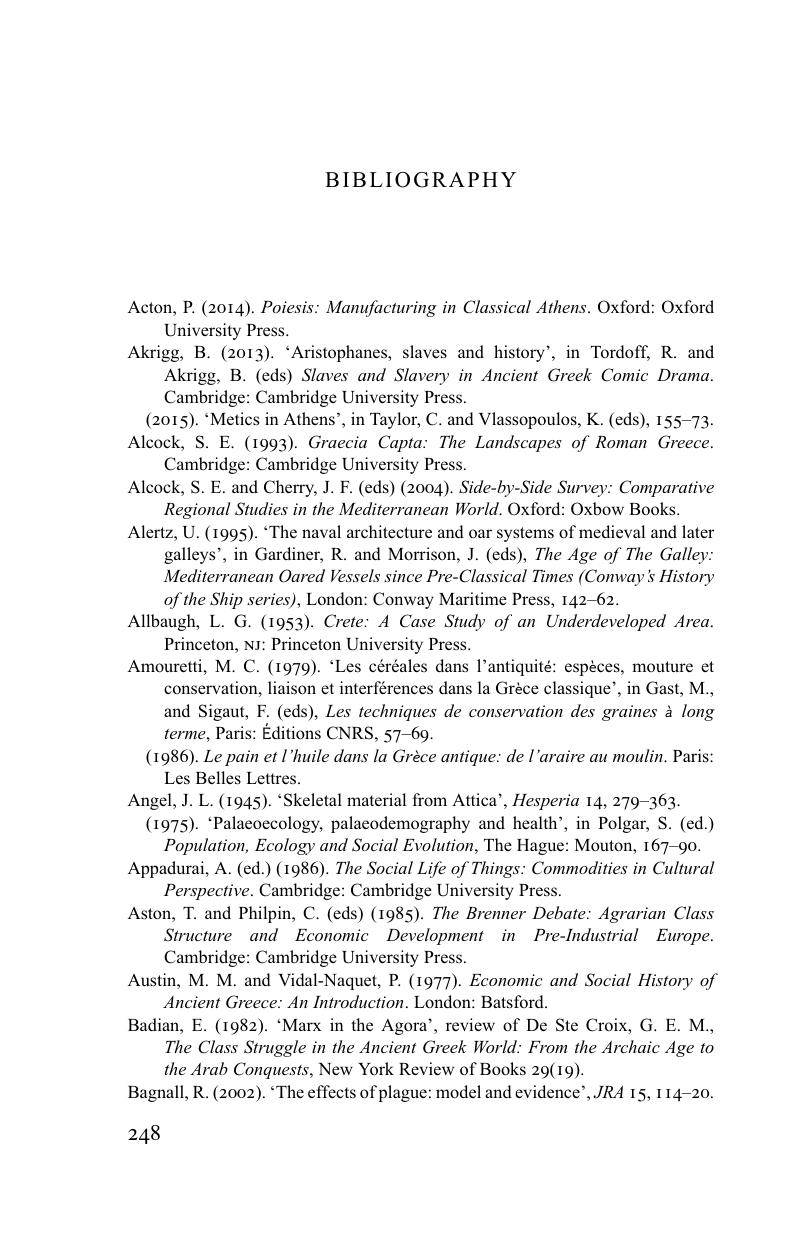Book contents
- Population and Economy in Classical Athens
- Cambridge Classical Studies
- Population and Economy in Classical Athens
- Copyright page
- Contents
- Tables
- Acknowledgements
- Abbreviations
- Chapter 1 Introduction
- Chapter 2 Population Structures
- Chapter 3 Population Size 1: Citizens
- Chapter 4 Population Size 2: Non-Citizens
- Chapter 5 Population Changes
- Chapter 6 Immediate Implications of Population Change: War and Food
- Chapter 7 Beyond Food and Fuel
- Chapter 8 Conclusion
- Bibliography
- Index
- References
Bibliography
Published online by Cambridge University Press: 08 March 2019
- Population and Economy in Classical Athens
- Cambridge Classical Studies
- Population and Economy in Classical Athens
- Copyright page
- Contents
- Tables
- Acknowledgements
- Abbreviations
- Chapter 1 Introduction
- Chapter 2 Population Structures
- Chapter 3 Population Size 1: Citizens
- Chapter 4 Population Size 2: Non-Citizens
- Chapter 5 Population Changes
- Chapter 6 Immediate Implications of Population Change: War and Food
- Chapter 7 Beyond Food and Fuel
- Chapter 8 Conclusion
- Bibliography
- Index
- References
Summary

- Type
- Chapter
- Information
- Population and Economy in Classical Athens , pp. 248 - 267Publisher: Cambridge University PressPrint publication year: 2019



